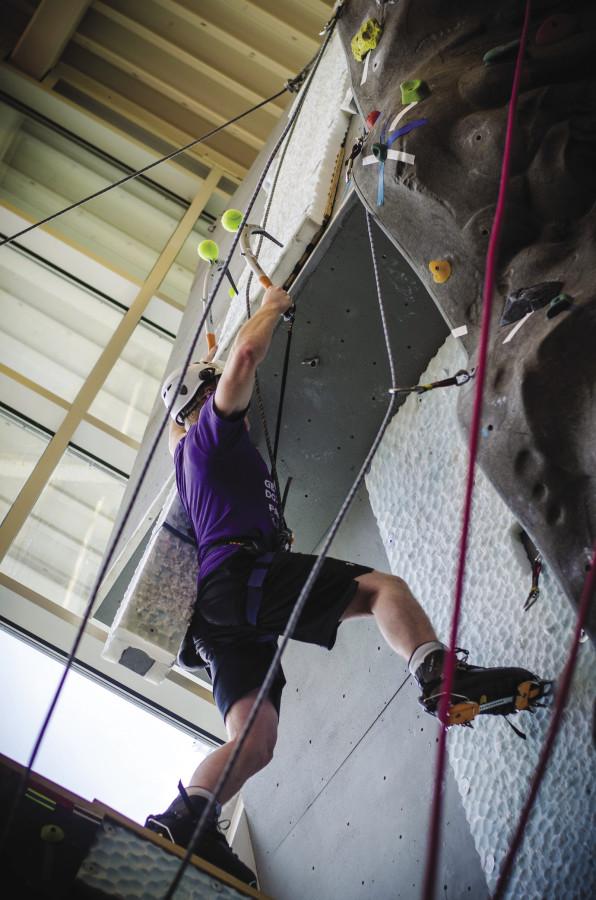Students practice ice climbing in URC at Eastern

Photo credit Casey Picha.
EPIC will teach beginners how to ice climb, how to use proper safety precautions and how to have a good time on the ice.
From Feb. 15 to the 18, EPIC will take a small group of students to two locations near Banff, in Alberta, Canada, for a two day ice climbing trip.
EPIC is making the trip north because the local ice climbing venues are usually not cold enough for ice to form solid enough, according to John Fair, EPIC outdoor program director.
Climbing is all about the challenge, according to junior geology major Zach Turner. Turner is an instructor at EPIC who started rock climbing six years ago and progressed to ice climbing four year ago.
“[Ice climbing] is just fun. I’m really drawn to alpinism and climbing mountains, and I think ice climbing is a big part of that,” said Turner.
In mountaineering there can be steep sections of snow that, when traversed, are technically considered ice climbing, according to Turner.
Before the trip, a clinic is hosted to teach participants how to use ice tools and crampons, spiked iron plates worn on boots, according to Fair.
At the start of November, the rock climbing gym is set up with a practice ice climbing wall made of Styrofoam so climbers can try it out and learn the body mechanics of ice climbing before climbing on real ice, according to Fair.

“In real ice climbing, you get tired because you have to swing your ice ax multiple times before it will stick. As opposed to Styrofoam, which is one swing, one stick,” said Fair.
EPIC teaches students how to climb up the ice by using various techniques of swinging ice tools, according to Turner.
The first day, climbers are introduced to climbing at a mellow low angle terrain to get the basics down and get comfortable, and the second day consists of a lot more vertical climbs so it is more of a challenge, according to Fair.
“One of the techniques we teach is body weight testing. You listen to the sound of the ice ax as it sinks in. It’s not so much the depth, it just depends on what kind of ice. A couple millimeters are all you need. Depending on the ice, you might have to get a lot deeper than that,” said Fair.
The first ice climbing trip in January went smoothly. The staff made sure no one got hurt by managing risks. They checked temperatures and designated areas to avoid where ice appeared to be too loose, according to Turner.
The group had to avoid icicles and certain sections of ice because temperatures were above freezing, according to Turner.
“There is a lot of apprehension at first for people that are new to climbing. It’s just intimidating to anyone,” Turner said. “But we had a super fun group. Everyone was really out there to have a blast and push their limits as much as they could.”
EPIC puts safety first. However, falling ice is a standard hazard in ice climbing, which can lead to bruising of the face, according to Turner.
“[A] big part of the job is getting everyone on board with the right gear and the right idea of what we’re going to be doing,” said Turner.
Most ice is not overhanging because of the way water freezes. Water drips straight down and freezes, making most ice vertical, according to Fair.
According to Turner, ice climbers get a sense of the differing properties of the ice they are climbing, be it thickness, density or even its age. “This is something you learn through experience,” said Turner.
“There’s a lot of challenges you overcome. I think the big aspect of it is coming back [and] building really strong friendships through it. I think that’s an aspect people don’t see going into it, but they see going out of it,” Turner said.





![Simmons said the biggest reasons for her success this year were “God, hard work, and trusting [her] coach and what she has planned.”](https://theeasterner.org/wp-content/uploads/2024/05/image1-1-1200x800.jpg)









